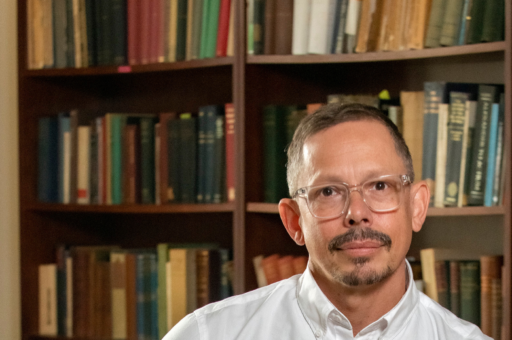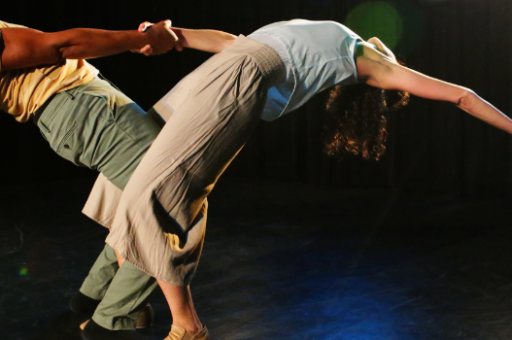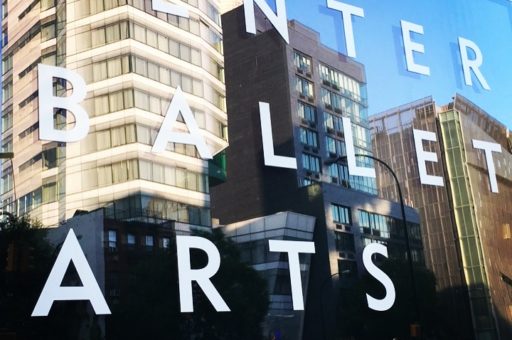Paul Vasterling (CBA ’17) was appointed CEO of Nashville Ballet in 2010, twelve years after becoming its artistic director, and 22 years after joining the company as a dancer. Vasterling has created numerous works ranging from classical, full-length story ballets to contemporary one-acts set to music by internationally renowned composers and songwriters. A magna cum laude graduate of Loyola University in New Orleans, Vasterling was awarded a Fulbright Scholarship enabling him to work extensively in South America, paving the way for a tour there by Nashville Ballet in 2005. Under his leadership, Nashville Ballet has transformed from a troupe of 12 professional dancers into a company of 24 with a second company of more than 20 dancers.
For more on Vasterling’s CBA Fellowship, visit his fellow page.
What made you decide to apply to the CBA Fellowship?
I was here in New York last year, and I came to see Preeti Vasudevan’s showing. That’s the first time I thought, “maybe I should apply for this.” I had a specific project in mind, which drove me to apply. Originally, I didn’t even know it was possible.
Could you give us an overview of your project here at the Center? What were your project goals at the onset, and how have they evolved?
My project is really about adapting some literature to making a narrative ballet — a ballet that tells a story. I’ve done lots of those in my time, but I wanted to try to push and break my mold a little bit. I started off with the Virginia Wolff novel “Orlando,” and I am still very interested in that. But, as I was preparing the project, I was given a book of poems by this author named Caroline Randall Williams, a poet in Nashville. My original project goals were to look at writing an adaptation of those two works and how they might come to the stage. It came to be that I really started to focus on Caroline Randall Williams’ “Lucy Negro Redux.”
So I shifted my whole focus from “Orlando” to “Lucy Negro Redux.” Once Caroline came into the picture, we wrote this scenario sitting here together in this office. Then, I worked with another dramaturg, who is a faculty member in dance at Tisch named Cari Ann Shim Sham. She was my sounding board and my editor in the whole thing. We’re going to use the spoken word through Caroline’s poems and some of Shakespeare’s sonnets as part of the music. Some of them will be musicalized, some of them will be made into song, some of it will just be said under music and some of the dancing will just be done to plain music. So it’s this sort of melange that will make the score to the ballet. There’s even a little bit of prose in there that sort of sets up the whole story.
What was it like working with the author of the poems on which you’re basing the ballet?
It was incredibly inspiring. You know, I felt we had this great back and forth. There was also this, almost, I’m not going to say “clean” opinion, but she doesn’t know our traditions or our go-to things to do, or even an idea of what narrative ballet is like as we know it in the ballet world. So she really brought a fresh voice to me and a fresh challenge. It was wonderful. I love having that back and forth. It really enlivens the whole process. I started off alone, writing everything, and then she came in. Everything changed when she got here. It all kind of shifted focus. It’s a great example of the Center. That kind of interaction between an author, a poet, and a choreographer.
While I was here, I realized that our art form is more like poetry than like anything. So when we’re trying to tell a story with ballet, it’s a lot like telling a story with poems. You’re working in metaphor, with essence of ideas and movement. As I go forward and do other ballets, I’m going to be looking at narrative poetry as opposed to prose, because there is a really clear relationship between those things that I never really thought about before working on this project.
You’ve spoken about your work. Do you have further thoughts about your time here?
First of all, it’s a quiet space of my own, which is incredible. It’s also smack in the heart of the Village and NYU, which is really fantastic. You go out the door and are inspired just by the people who walk by you. Tangibly, NYU Bobst Library is fantastic. They have numerous scores, some of which are sitting here on my desk. It’s a great resource, with books, of course, about Shakespeare. That’s really incredible. Also, the library has a lot of video resources that I don’t know that people know about. I was able to access a lot of story ballets I’ve never seen before. It’s really this combination of giving us a quiet space to be in and think in. Opening our minds, but with different sources of information.
Also, I asked while I was applying if CBA knew of anybody who was in dance but more film-oriented. CBA then connected me with Cari Ann Shim Sham, who has been fantastic. I think she got a lot out of our process too. I think this place, because it’s so open minded in its requirements, it really helps.
Space — headspace — is a really good way to put it. And permission to find ideas. I think that the ballet world and choreographers need ideas and inspiration beyond what we know. The ballet world is needfully very focused. So getting the opportunity to have other ideas and putting scholars and artists in this environment is very healthy.
Often, we hear that our fellows were able to collaborate with other fellows in their cohort in unexpected ways.
It leaks. It crosses over. Honestly, I was just looking at my notebook yesterday, and I had not started on anything when I got here. I really only knew the poems. When I was here, I suddenly got thrown into the world of Shakespeare again. It just so happened that a previous fellow was down the hall – Seth Stewart Williams – and he knows Shakespeare really well. So we met for drinks and conversation, which turned me onto Shakespeare.
As a choreographer, I’ve had this experience where you’re talking to someone here, not necessarily about dance. Meanwhile, you’re working on “Lucy Negro Redux”, and you think, “ding! That’s what this should be. Oh, I get it.” That’s how the universe works. I hate to sound cosmic, but it really is that kind of synergy that happens when you’re around people who talk and speak about other things, other topics. It’s really important and a very exciting idea.




